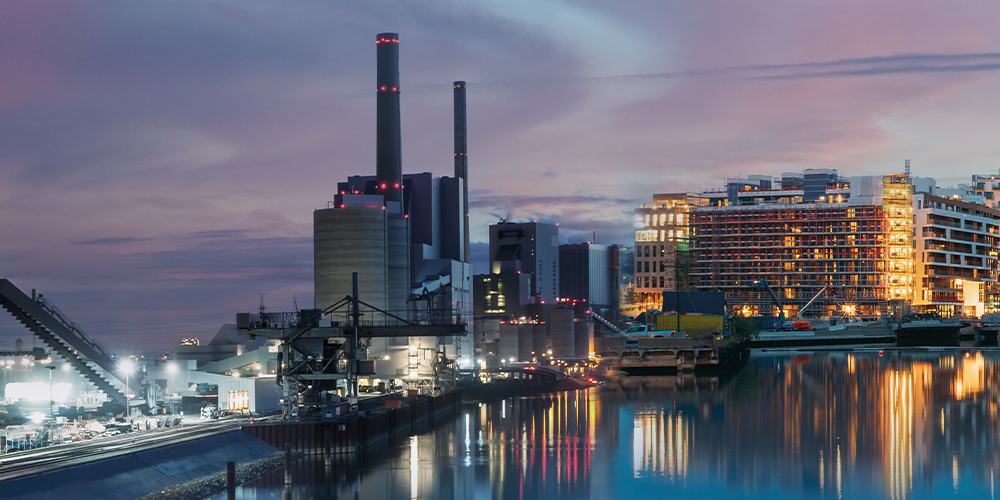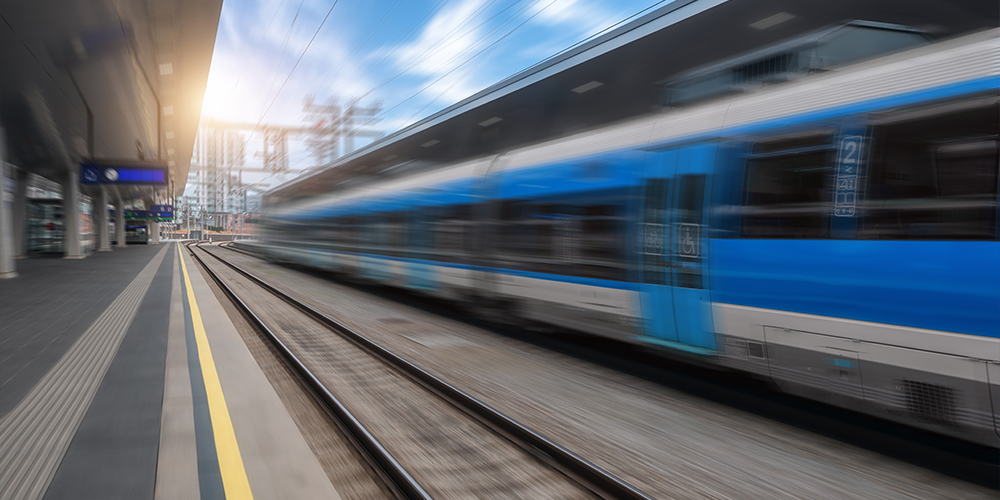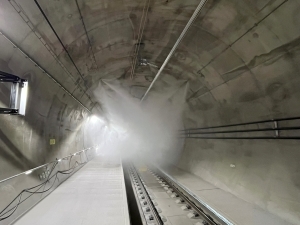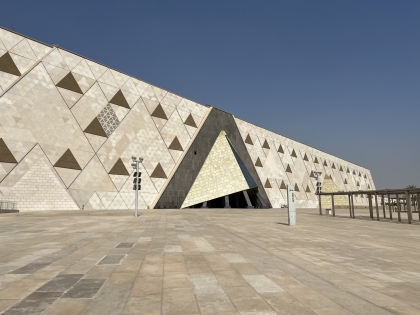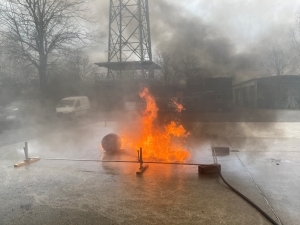Sehr hohe Brandlasten und Temperaturen von über 1000°C sind ein Teil der Herausforderungen in Straßentunneln. Unser AQUASYS Brandbekämpfungssystem schützt zuverlässig Personen und Infrastruktur.
Es wurde in Realbrandversuchen getestet und bietet effektiven Schutz durch patentierte Düsenlösungen für verschiedene Brandarten. Hochwertige Werkstoffe und spezielle Beschichtungen erfüllen die anspruchsvollen Anforderungen dieser extremen Umgebung.
Der Betrieb von Schienenfahrzeugen durch geschultes Personal bietet hohe Sicherheit. Unfälle oder Fehlfunktionen sowie Brände können dennoch nicht
ausgeschlossen werden und stellen ein hohes Risiko für die Benutzer:innen dar.
Fluchtwege sind oft schwierig zu realisieren und Tunnelausfälle können erhebliche Kosten verursachen. Unsere Brandbekämpfungssysteme gewährleisten Sicherheit im gesamten Tunnel oder an den Nothaltestellen.
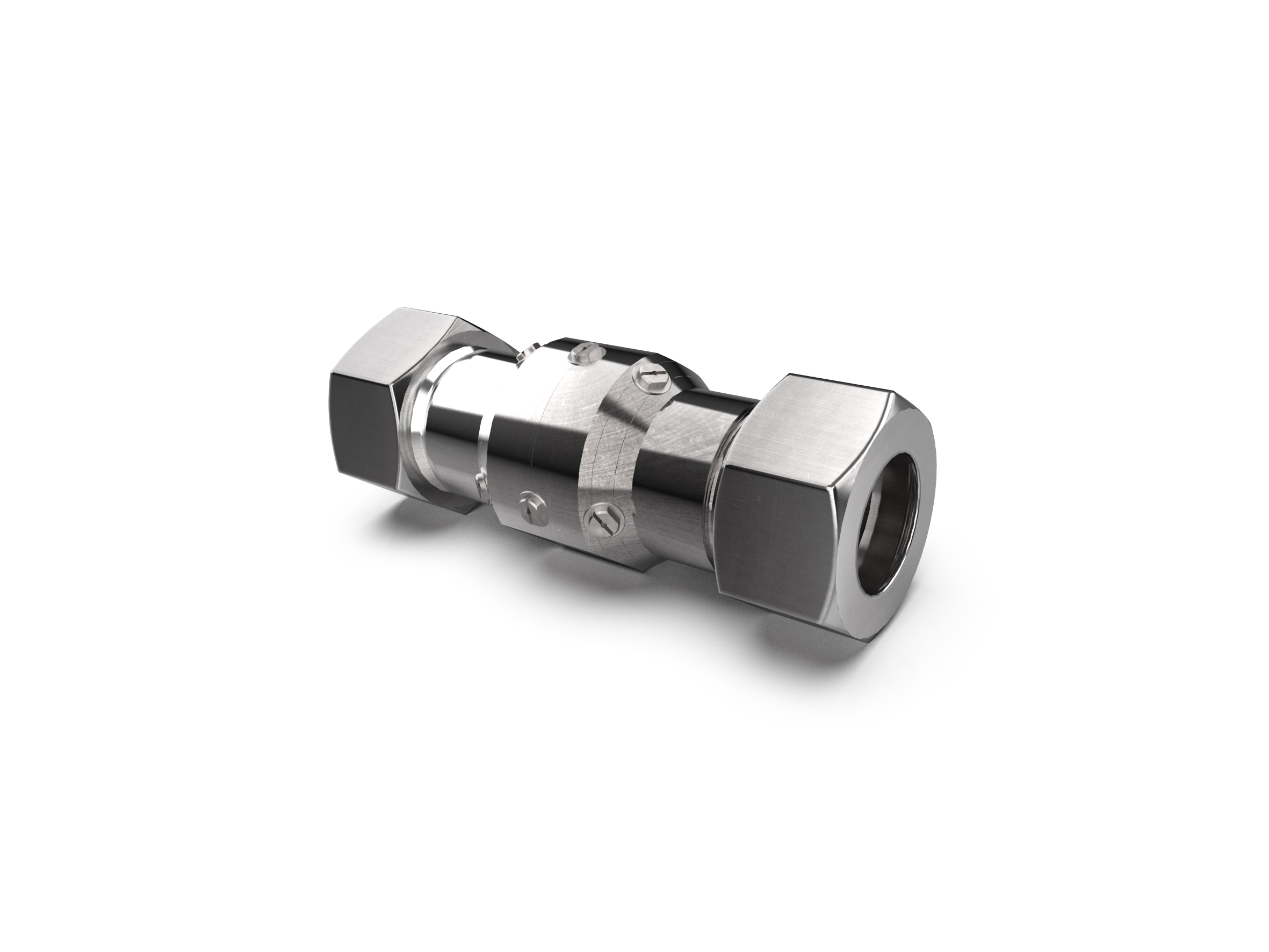
Wassernebeldüsen
Hochwertige Edelstahldüsen gewährleisten zuverlässige Funktion und lange Lebensdauer in schmutz- und abgasbelasteten Umgebungen. Das patentierte In-Line-Design ermöglicht eine minimale Einbauhöhe und einfache Inte-gration mit anderen Tunnelkomponenten. Durch variable Düsenbestückung lassen sich die Wassernebeldüsen leicht an verschiedene Brandlasten anpassen.
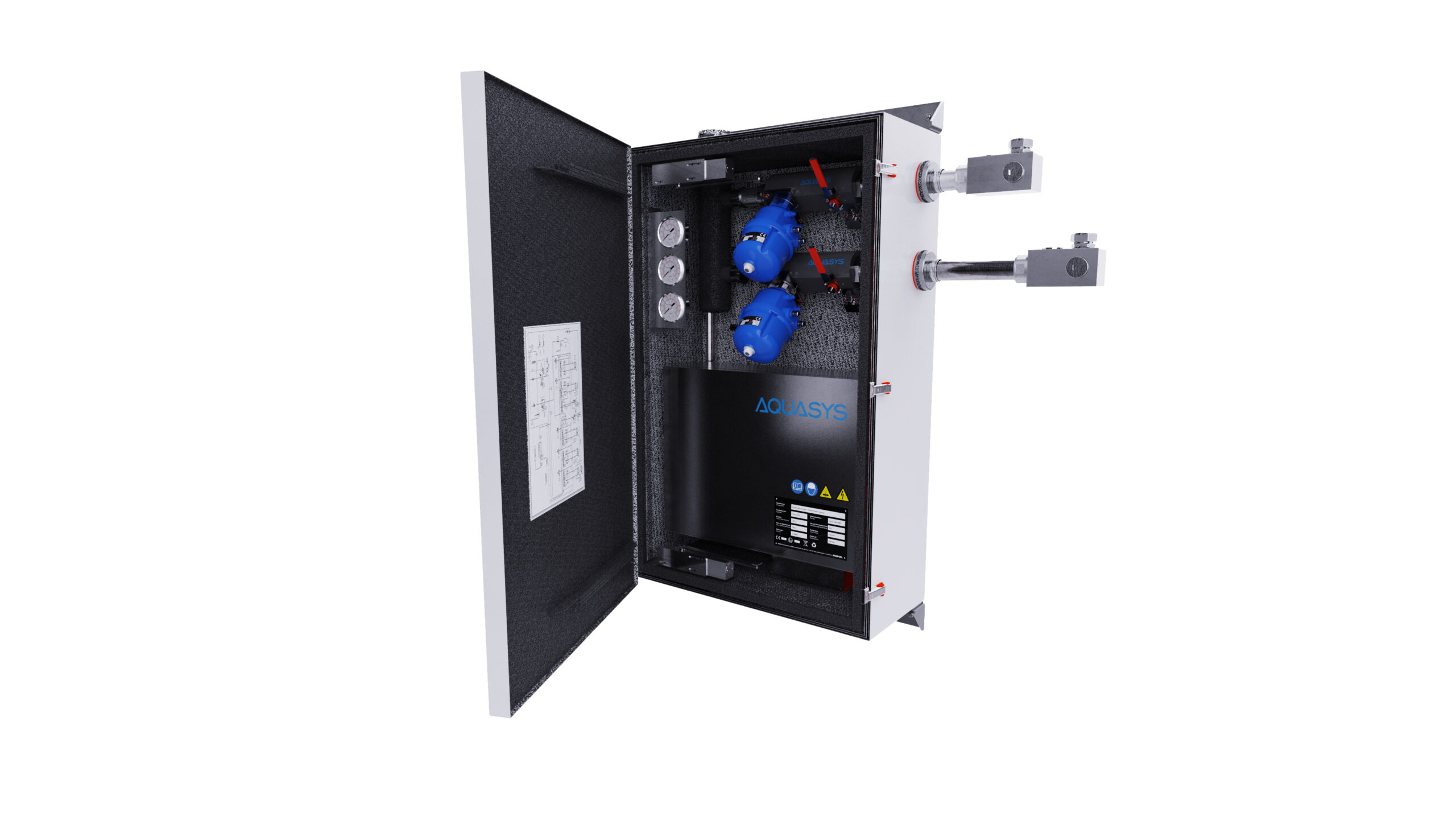
Bereichsventileinheiten
Motorbetriebene Kugelhähne gewährleisten eine zuverlässige Aktivierung der Wassernebelanlage. Die integrierte Fernwartungsfunktion ermöglicht eine einfache und regelmäßige Funktionsprüfung. Bei Verwendung von Bereichsventilen im Tunnelfahrraum sind diese durch feuerfeste Einhausungen geschützt.
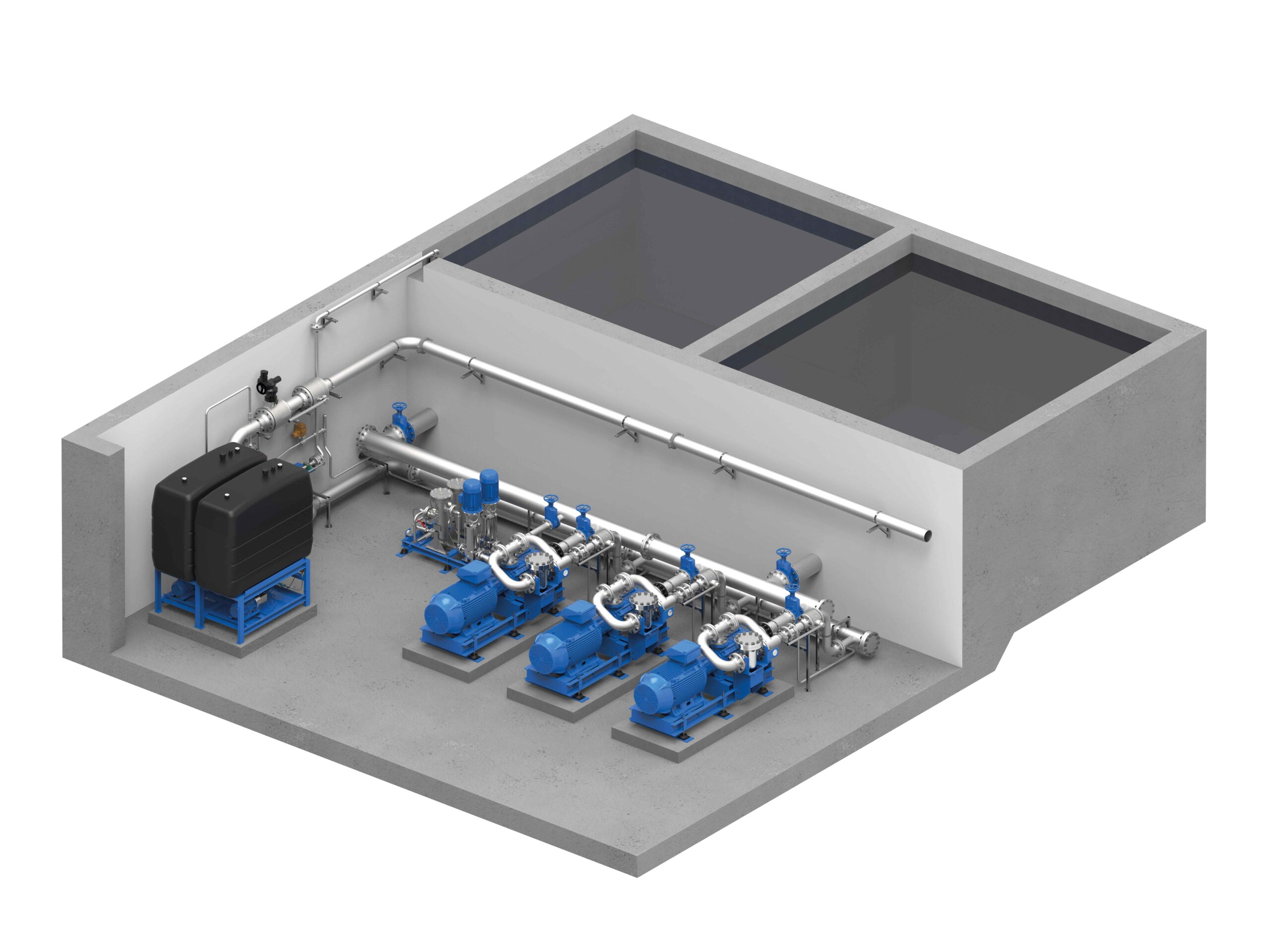
Pumpenstation
Das Herzstück der Wassernebelanlage ist die Druckversorgung, die wahlweise mit Elektromotoren oder Dieselmotoren angetrieben wird. Durch die flexible Kombination erprobter Standardkomponenten kann jedes System optimal an die erforderlichen Parameter (Dimensionen, Entfernungen,…) angepasst werden. Ein optional integrierbarer automatisierter Wartungsmodus gewährleistet zusätzlich höchste Einsatzbereitschaft und Lebensdauer.

